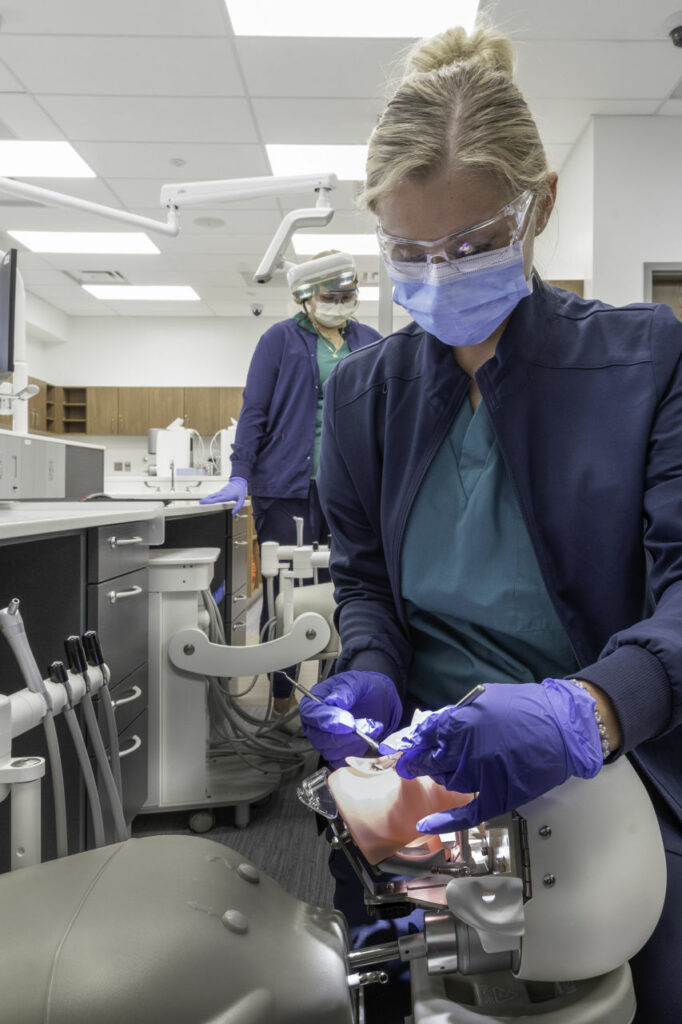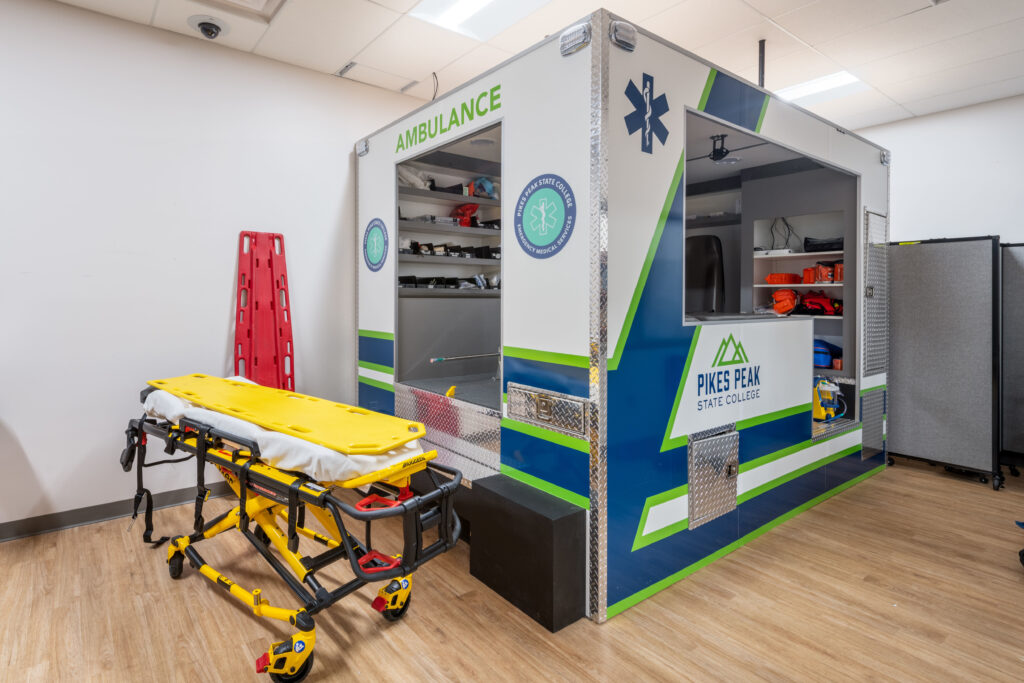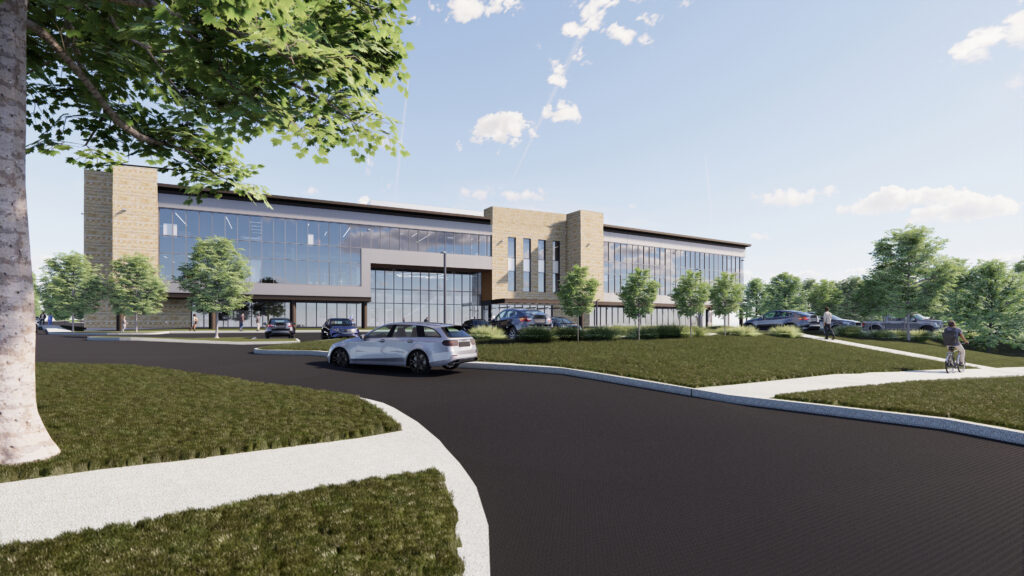healthcare, higher education, and k-12 teaming up: building colorado's healthcare workforce



Mark Arnold, Director of Healthcare Construction
In a state already grappling with critical shortages in healthcare personnel, Colorado’s education and healthcare systems have forged a dynamic partnership to address this pressing issue. Even before the COVID-19 pandemic highlighted the vulnerabilities in healthcare staffing, the state faced challenges in filling entry-level and professional healthcare roles. Now, in a coordinated effort, healthcare providers, higher education institutions, and K-12 schools are joining forces to rebuild and expand the healthcare workforce—and the results are inspiring.
The Growing Alliance
While collaborations between healthcare and education systems are not new, the current level of focus and concerted effort is unprecedented. From universities to public school districts, Colorado’s educational institutions are stepping up to meet the challenge. As we continue to hear in the healthcare construction world, “There are beds available, but the workforce is not available to service those beds.”
Projects led by construction firms like GH Phipps exemplify how these partnerships are translating into tangible improvements. For example, GH Phipps recently completed two transformative projects for Pikes Peak State College (PPSC), aimed at consolidating and enhancing their Allied Health and Dental programs.
Pikes Peak State College: Building for the Future
Center for Healthcare Education and Simulation (CHES)
PPSC’s new Center for Healthcare Education and Simulation (CHES) is a 70,605-square-foot facility designed to centralize the college’s nursing and Allied Health programs, which were previously scattered across multiple locations. This comprehensive interior renovation created a state-of-the-art facility that includes:
- Multiple healthcare simulation labs with functional patient rooms, a nursing ward unit, a pharmacy technician suite, physical therapy, and surgical suites.
- Specialized recording systems, control rooms, and debrief rooms for reviewing mock scenarios.
- Collaborative classrooms, support spaces, and student study areas designed to foster interactive learning.
Notably, the Health Education Center features Colorado’s first certified interdisciplinary simulation lab, a cutting-edge resource that will significantly reduce the training time needed at hospitals and clinics. Among only a handful of such labs in the United States, this facility is poised to set a new standard for healthcare education in the region.
Delta Dental Oral Health Career Center
PPSC’s second major project involved converting an existing child development center into an Oral Health Career Center for the college’s Dental Assisting and Dental Hygiene programs. This project included:
- Creating dental classrooms and lab spaces equipped with industry-standard dental equipment.
- Upgrading mechanical and plumbing infrastructure to accommodate medical-grade air and vacuum systems.
- Designing spaces for live patient clinical settings, providing students with hands-on experience in real-world conditions.
A New Nursing Facility: Expanding Opportunities
GH Phipps is also working on a ground-up facility for a national nursing college in Colorado. Scheduled for completion in June 2025, this three-story, 76,500-square-foot building will house educational and clinical training spaces. Highlights include:
- Advanced simulation labs and clinical training spaces designed to meet the growing demand for skilled nursing professionals.
- Spaces dedicated to continuing education and advanced training, supporting not only nursing students but also current professionals seeking to upskill.
With two-thirds of the facility focused on cutting-edge training, this project will be a cornerstone for nursing education and clinical advancement in Colorado.
Statewide Efforts: Simulation Programs and Legislation
Colorado’s major universities, including Metropolitan State University, Colorado College Denver, and the University of Northern Colorado, are also expanding their simulation nursing programs to address the healthcare workforce shortage.
On a legislative front, the passage of Senate Bill SB22-226 in 2022 established the Practice-Based Health Education Grant Program, which funds hands-on training for health profession students and residency participants. This initiative is aimed at addressing the healthcare demands of Coloradans while supporting the well-being and retention of healthcare workers.
K-12 Contributions: Building a Pipeline Early
Aurora Public Schools (APS) is taking innovative steps to prepare the next generation of healthcare professionals. In partnership with UC Health, Arapahoe Community College, and the Community College of Aurora, APS is developing a new Health Science Magnet High School. This program will equip high school students with the skills to enter the healthcare workforce directly after graduation or pursue higher education in the field.
Designing and Constructing for Dual Purposes
At GH Phipps, we understand that the design and construction of healthcare education facilities require a unique blend of expertise in both healthcare and higher education. Budget and schedule are key drivers, making it imperative for the project team to explore how to integrate healthcare simulation, experience, and training into the program while maintaining flexibility for future adaptations. A sharp focus on cost management is crucial throughout the process.
I am a strong proponent of mockups, both virtual and physical. Virtual reality design serves as the initial step, providing a dynamic way to visualize and iterate on designs. Following this, creating physical mockups using materials such as cardboard, insulation board, and PVC allows the education and healthcare subject matter experts (SMEs) on the project team to engage in hands-on reviews. These iterative steps ensure that the design aligns with real-world needs.
For example, a simulation patient recovery room should be as realistic as possible. Patient headwalls are among the most critical tools in actual patient care. Mocking up headwalls requires time, effort, and extensive discussion with the project team. These headwalls incorporate elements such as medical gases, electrical systems, communication setups, and lighting—all of which must be carefully designed and tested. Entire patient rooms and other critical spaces within simulation labs should also be mocked up to ensure the flow and spatial functionality align with patient care and treatment needs.
Design and construction SMEs for these projects can include professionals such as nurses, hospital infection preventionists, and industrial hygienists. Their critical perspectives, grounded in end-user experience and patient safety, are vital for achieving “function over form.” For instance, a beautifully designed sink and faucet might inadvertently become an infection control hazard, underscoring the importance of practical, safety-first design choices. Many of these facilities may even accommodate live patients, further elevating the need for precise, safety-oriented design.
Seemingly small details—the everyday considerations that healthcare design teams, health professionals, and specialized contractors bring to the table—can significantly enhance the educational experience for the future healthcare workforce. By fostering a deep collaboration between design and healthcare SMEs, these projects can achieve a balance of innovation, practicality, and foresight, creating impactful environments for learning and care.
A Promising Future
The collaboration between healthcare, higher education, and K-12 systems is a game-changer for Colorado’s healthcare workforce. By investing in state-of-the-art facilities and innovative programs, these partnerships are not only addressing current shortages but also building a sustainable pipeline of skilled professionals.
As these efforts continue to gain momentum, Colorado is setting an example for how communities can work together to overcome critical challenges and ensure a healthier future for all.
